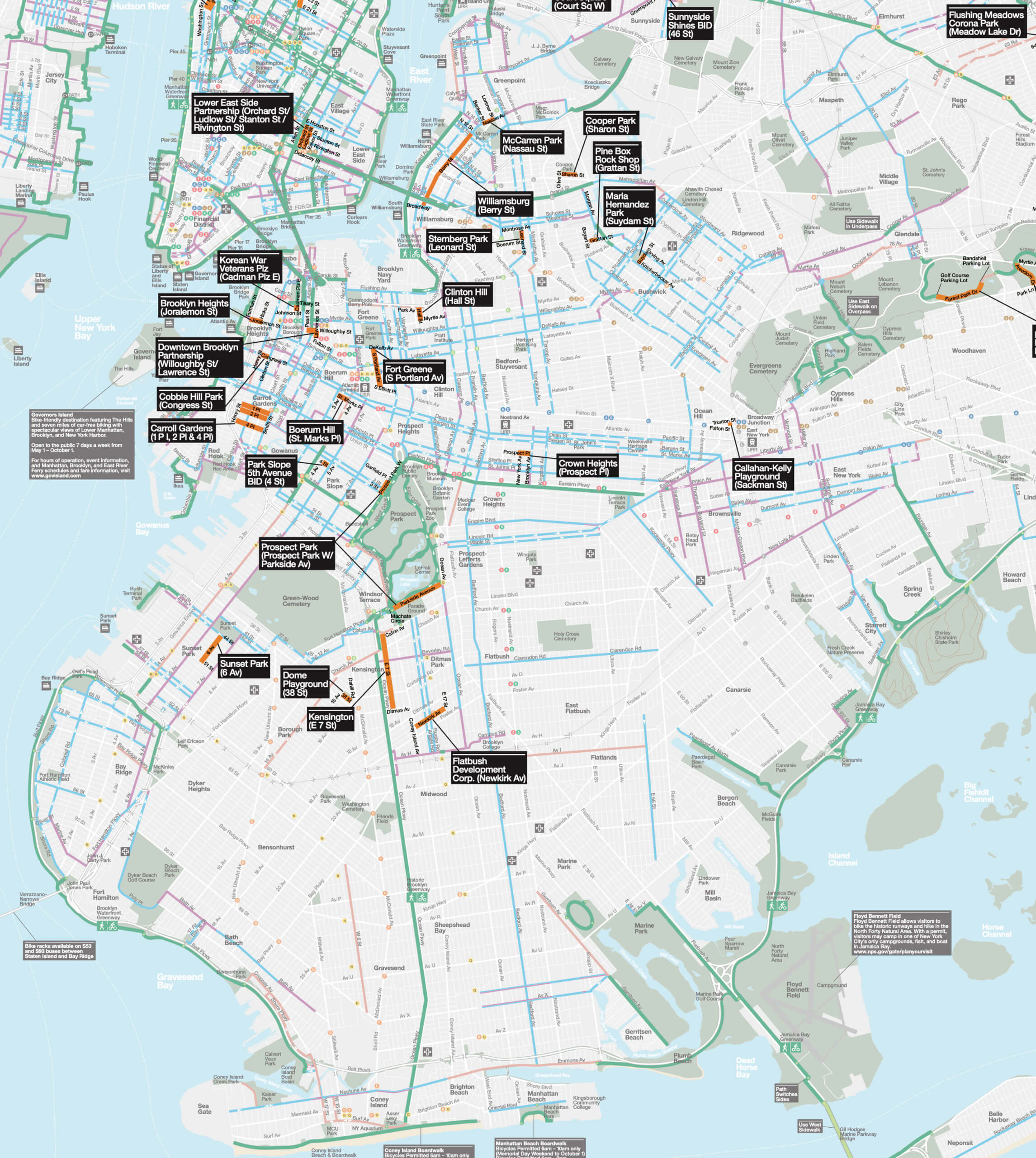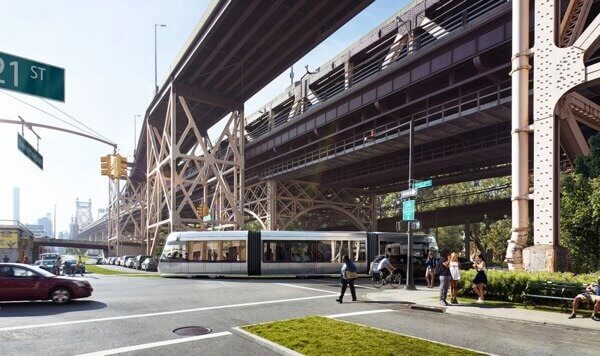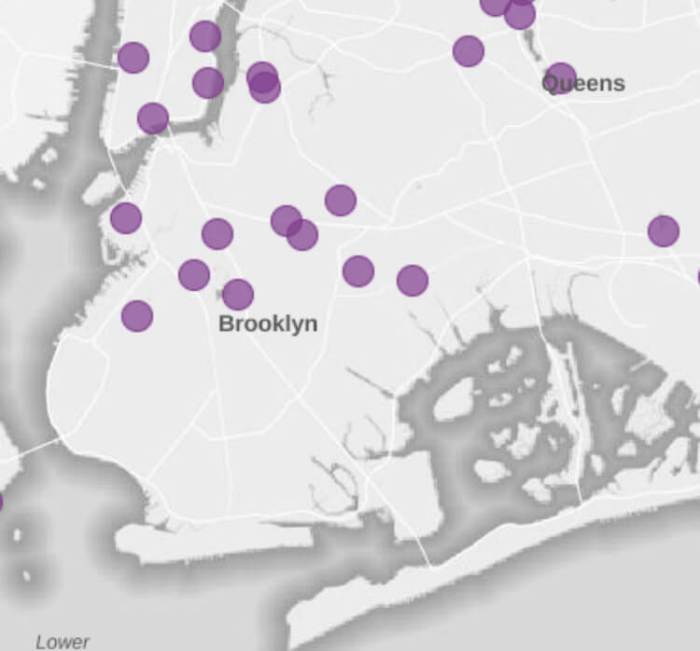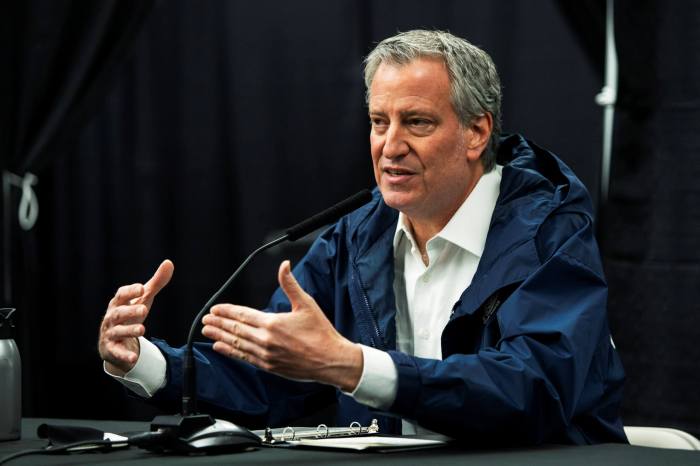These streets were made for walking!
The city will add more than five miles of Brooklyn roadways to its “open streets” plan and will roll out almost four miles of protected bike lanes to allow locals to social distance and bike more easily amid the coronavirus pandemic, Mayor Bill de Blasio announced Wednesday.
“Now that warmer weather has arrived, New Yorkers will need more options to enjoy the outdoors at a safe, social distance,” said de Blasio in a statement. “We’re grateful to all our local partners, and we believe new bike lanes will lay the groundwork for a cycling surge in the months and years to come.”
The city’s Department of Transportation will work with the Police Department and local community groups beginning May 14 to close off 5.45 miles of streets in Brooklyn and a total of 12 miles citywide to vehicular traffic. The upcoming closures make up the largest batch of street closures since the mayor announced the open streets program in late April, bringing the current tally of pedestrian-only roadways in the Five Boroughs to 30 miles.
The city previously closed down five blocks Downtown, two streets bordering Prospect Park, and a 200-foot sliver running through the pint-sized Callahan-Kelly Playground in Cypress Hills.
Police precincts will manage almost four miles of the newly-opened Brooklyn streets, while business improvement districts and other local groups will manage about a half mile, and another mile will open adjacent to parks, managed by police, the Parks Department, and DOT. A citywide map of open streets is available here.

Most of the additions stretch for just one, two, or three blocks, but there are some notably longer sections, including almost a mile of Berry Street from N. 12th Street to Broadway in Williamsburg and 0.8 miles along E. Seventh Street from Caton Avenue to Ditmas Avenue in Kensington.
In Carroll Gardens, First, Second, and Fourth places form a near superblock of almost one mile of open streets between Henry and Smith streets, excluding Third Place.
The streets near parks and those overseen by the police will be open from 8 am to 8 pm daily, but the three sections managed by BIDs and community groups have varying hours.
Newkirk Avenue between Coney Island Avenue and E. 17th Street will be open for only eight hours a week, from 3-7 pm on Tuesdays and Thursdays, courtesy of the Flatbush Development Corporation.
The closed bar and concert venue Pine Box Rock Shop will secure the closure of a block of Grattan Street, between Morgan Avenue and Bogart Street in East Williamsburg, while the Fifth Avenue BID in Park Slope will reopen a cul-de-sac block on Fourth Street which DOT previously opened as a play street before closing it again in January.
City transportation gurus are still looking for more community groups to help them launch more open streets, and interested parties can fill out the DOT’s online survey here.
In the coming two weeks, the city will also install three temporary bike lanes totaling 3.8 miles in Brooklyn, using barrels, signage, and other barriers like they did on Smith Street Downtown in March.
Those include an extension of the Fourth Avenue bike lane, which currently ends abruptly at First Street and will now continue to Flatbush Avenue, Ashland Place and Navy Street from Hanson Place to Sands Street, which currently has an unprotected bike path, and Flatbush Avenue from Grand Army Plaza to Ocean Avenue, a stretch where city planners already wanted to add a two-way bike lane.
These new bike paths may become permanent after the end of the pandemic outbreak, according to City Hall, and DOT will collect feedback from community boards and elected officials in those areas.
But large swaths of the borough have yet to get any open streets, including all of southern Brooklyn from Bay Ridge to Canarsie, as well as some of the Kings County’s poorest neighborhoods like East New York and Brownsville.
A spokesman for de Blasio said that the city still plans to open more streets in the coming weeks and that Hizzoner has opened streets in lower income communities in other boroughs.
“City agencies, in collaboration with the City Council, are always considering options for future announcements, and we look forward to expanding this program even further in the weeks and months to come,” said Mitch Schwartz in a statement.
That program followed a push by City Council Speaker Corey Johnson after a failed pilot with one street in all boroughs except Staten Island, where the city closed off a couple of blocks of Bushwick Avenue for less than two weeks, before abandoning that effort.






















